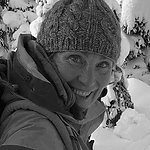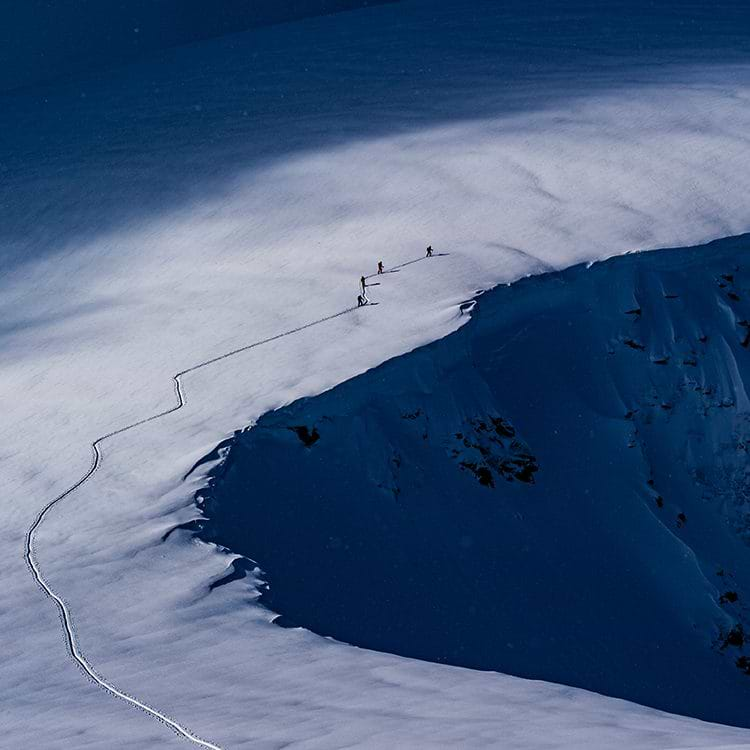A “boutique” is a small, specialty shop within a bigger industry that offers high-end, specialized products. Furberg Snowboards easily checks all these boxes. This Norwegian company enjoys a global reputation for making some of the best and most innovative boards on the market. Still, with only three boards in their line-up, catering specifically to freeriders who favour big mountains, steep lines and splitboarding, this tiny brand is a David to the industry’s Goliaths.
It started with frustration. Soft-spoken founder Daniel Furberg, originally from northern Sweden, was an avid big mountain rider who had spent a few years in the Swiss Alps. He had become increasingly disappointed in his search for a board designed to go fast in deep powder on big mountains.
Most frustrating was the stunning revolution coinciding in the ski industry, where mind-blowing new designs were being cranked out for freeride skiers. It seemed like an obvious niche in the snowboard world that was begging to be filled, but Furberg was gob-smacked when his snowboard sponsor showed no interest when he suggested they adopt some of the same innovation. Not to be deterred, Furberg began experimenting on his own in 2009 and developed some prototype boards.
At the same time, Furberg’s journey was embarking that Jeremy Jones was feeling the same frustration — and equally creative thoughts — across the pond in North America. Jones had also come up against a complete lack of interest among established snowboard companies in developing a freeride board.
Both innovators were coming at the same problem in two different directions.
Furberg was a semi-professional snowboarder who had competed on the Freeride World Tour for one year and worked extensively with photographers and filmmakers. Still, he also had a degree in mechatronics — a hybrid engineering approach that prepared him for the complexities of production. He just needed the right design.
Furberg found his answer in an old barn near Oppdal, Norway. Endre Hals was a highly skilled ski maker with his own production factory. “What Endre doesn’t know about modern freeride skis is not worth knowing,” says Furberg. “He helped figure out the right geometry and find the general form for Furberg Snowboards.”
The next piece of the Furberg puzzle showed up in the form of Hampus Cederholm — a Swede with an academic and professional background as a product developer. The synergy was perfect; the duo has run the business together ever since.
The first step — a long-term plan for the brand and specific distribution and sales plans — was rather simple. “Daniel just developed and built boards that spoke for themselves — and the word spread,” Cederholm explains with a smile.
They secured development funding from Innovation Norway, and after six years of challenging work, long nights, and little income — the duo felt they were onto something — their business might work.
Furberg had been relying on his well-established network to test what he was doing. His friends were given samples to ride, the feedback was over-the-top enthusiastic, and rumours began to fly. Sales grew slowly but surely — fed mainly by word of mouth. Furberg Snowboards soon became synonymous with a longer turning radius inspired by freeride skis, with a reversed sidecut as their trademark. This was revolutionary — for snowboards.
“When freeriding, the turn is often a combination of carving and drifting the tail,” says Cederholm. “It is easy for the tail to catch without a reverse sidecut. In contrast, our boards are more fluid when transitioning between a carving and a drifting turn, especially in less-than-ideal snow conditions.”
Cederholm explains that the splitboard segment quickly embraced their design — much faster than most snowboarders. Today, splitboards are a big part of Furberg Snowboards DNA, making up 80 percent of their sales.
“The biggest reason for our success in the splitboard segment is our unique “Floorboard technology,” which stops vertical movement between the board halves, says Cederholm. This creates a riding experience similar to a regular snowboard.”
Slowly, some prominent brands have begun to replicate the Furberg design, but for the most part, they are still clinging to short-radius boards. “On the one hand, we would benefit from the bigger brands designing boards like ours to prove to a larger market that the design works,” says Cederholm. “On the other hand, freeriders who know what works are searching out our boards — which is ultimately what we are all about.”
Then there are the industry juggernauts like Jeremy Jones now heads — with snowboards suited for just about everyone. For now, Furberg is content to remain focused on its original concept.
Few would argue that their design works, given that some of the most prominent snowboarders in the world reach for a Furberg for their big mountain itineraries. Furberg’s list of ambassadors includes Austrian Manuela Mandl, winner of Xtreme Verbier 2022 and overall Freeride World Champion in 2018; Krister Furnes Kopala, a Norwegian known as one of the fastest big mountain riders on the planet; and Italian Davide Capozzi, who is riding some of the steepest lines in the Alps.
Furberg’s management has also remained pared down and efficient. Cederholm manages the company from an office near San Francisco, California. Furberg oversees product development from his home in Sogndal, Norway, where he can test prototypes in the backyard. Production now takes place in Poland.
Entrepreneurial wisdom says business succeeds by focusing on the problem — not on making money. This has proven to be a winning concept for this boutique, where Furberg now sells what many believe are the world’s best freeride snowboards and splitboards.




































